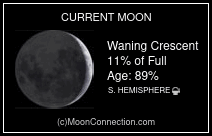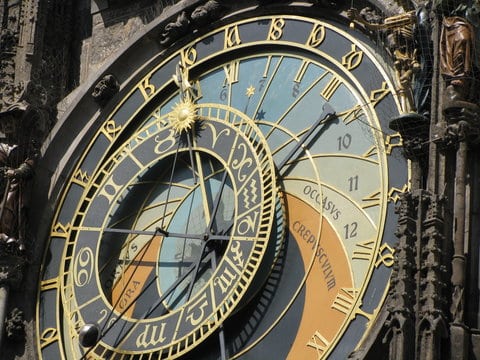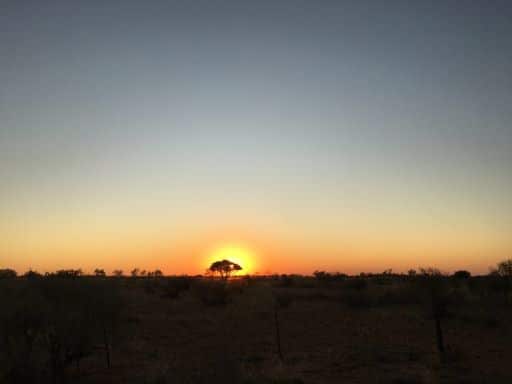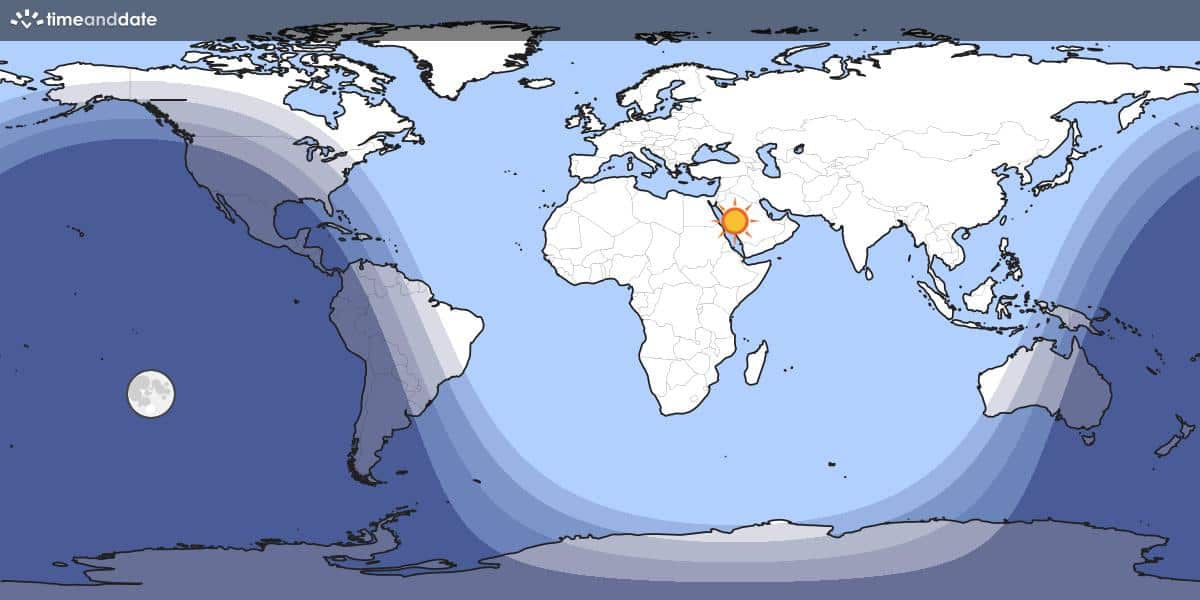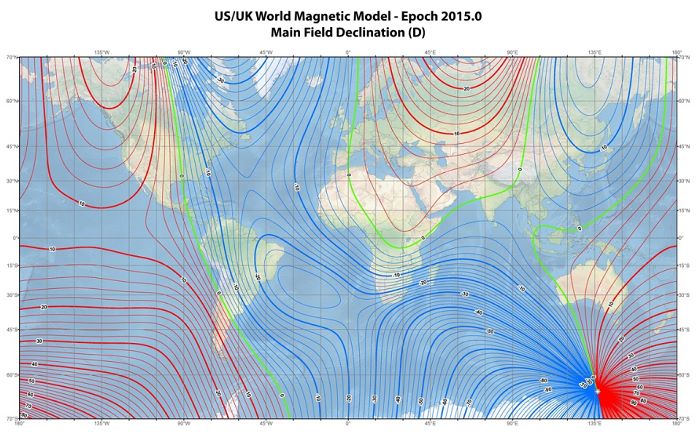Northeast Central
Steve Gottlieb’s Observations
NGC 1953 = ESO 056-118 = S-L 459
05 25 27.6 -68 50 17; Dor
V = 11.7; Size 1.2′
24″ (4/7/08 – Magellan Observatory, Australia): at 200x, this LMC cluster appeared bright, moderately large, round,~50″ diameter, with a brighter core. At 350x, it was grainy with a couple of stars easily resolved at the edges of the halo. The nucleus appeared offset from center towards the east.
The interesting NGC 1962-65-66-70 HII complex and cluster follows with NGC 1962 4.5′ due east. Stretching quite a distance to the E and SE lie a huge number of clusters, star clouds and HII regions.
Notes: James Dunlop discovered NGC 1953 = D 177 = h2862 on 25 Sep 1826. He recorded it as “a small round faint nebula, 8″ or 10” diameter. His position is 7′ too far E, consistent with the offset in RA (time) with the two previous objects in his drift. His small size estimate probably applies to the core.
John Herschel rediscovered NGC 1953 on 24 Nov 1834 (sweep 513) and described as “pF, S, R, gradually little brighter middle, 40″.” On 30 Jan 1835 (sweep 538) he recorded “pB, S, R, insulated, but has a group of four nebulae [NGC 1962, 1954, 1966, 1970] following in the parallel.” His position is accurate.
Hodge 4 = S-L 556 = LW 237 = ESO 086-009 = [H60b] 4
05 32 25.4 -64 44 11; Dor
V = 13.3; Size 2.0′
25″ (4/3/19 – OzSky): at 244x; moderately bright, fairly large, roundish, 1′ diameter, no distinct core. Seems clumpy and three stars were resolved (two on the north edge of the halo). A mag 10.5 star is 4′ W and a mag 13.4 star is 1.8′ WNW. S-L 573 lies 15′ SE.
Notes: Pietro Baracchi discovered Hodge 4 = S-L 556 on 3 Jan 1886 with the Great Melbourne Telescope. He discovered it while searching for John Herschel’s GC 1153 [NGC 1947], whose position was off by 1 degree, and wrote “F; pL; Roundish; perhaps a little elongated in a direction f.p. [E-W]. very gradually very very little brighter middle; indistinct; ill-defined contour – about 75″ broad and 90″ long. A star 10 mag precedes nebula by 37 s[econds of RA] and is 35″ south of it. Another star 13 mag precedes nebula by 14 seconds and is 25″ north of it – No diagram.” He determined an accurate position and confirmed the observation the next night.
Robert Innes found S-L 556, along with S-L 573 (15′ SE) on a photograph taken with the 10-inch Franklin-Adams camera of the Johannesburg (Union) Observatory. It was listed in the 1924 “Catalogue of Clusters and Nebulae Near the Large MagellanicCloud”
Paul Hodge classified this cluster as an anonymous (#4) “Red Globular” in the 1960 “Studies of the Large Magellanic Cloud. I. The Red Globular Clusters.” (ApJ, 131, 351)
Shapley-Lindsay (1963): size 65″, “Irregular, unresolved”
Age: 2.34 ± 0.09 billion years.
S-L 585 = BRHT 39a = KMHK 1099
05 34 30.8 -68 50 24; Dor
V = 12.8; Size 1.0′
25″ (4/3/19 – OzSky): at 244x; moderately bright, irregular knot, ~40″ diameter. A mag 12 star is at the west edge (cluster BRHT 39b?) and a mag 14 star was resolved at the center. Emission nebula N150 lies 6′ NW. Located 27′ NW of the center of the Tarantula Nebula.
18″ (7/8/02 – Magellan Observatory, Australia): small knot of stars of haze picked up 10′ NW of NGC 2042 (which is 17′ NW of the center of the Tarantula). A similar patch (KMHK 1122) is ~6’ WSW.
S-L 628 = KMHK 1166
05 38 30.0 -67 19 53; Dor
V = 12.3; Size 0.7′
14″ (4/4/16 – Coonabarabran, 145x and 178x): moderately bright, fairly small, round, 25″ diameter, fairly high surface brightness, no resolution. Picked up 7′ NE of NGC 2053.
NGC 2062 = ESO 086-020 = S-L 640
05 40 03.8 -66 52 36; Dor
V = 12.7; Size 0.9′
18″ (4/6/16 – Coonabarabran, 236x): moderately bright, fairly small, slightly elongated N-S, 30″ diameter, mottled. Some extremely faint stars are on the verge of resolution including one at the north or northeast edge. Two mag 9.8 stars lie 1.6′ S and 2.9′ SSW. A small, low surface patch, ~20″x15″ NW-SE, was noticed 4.7′ W. On the DSS, it appears to be a possible uncatalogued LMC cluster. S-L 643 lies 10′ SSE. It appeared fairly faint, fairly small, round, smooth surface brightness. Located 4.7′ E of mag 8.4 HD 38305. A mag 12 star is 2′ SE.
Notes: John Herschel discovered NGC 2062 = h2937 on 3 Jan 1837 and recorded “vF; E; gradually little brighter middle; 40″; north of 2 stars 10m.” His position is 1 tmin too far west, but his declination matches this cluster and two bright stars lie to the south, so the identification is certain. Eric Lindsay first noted this error in “Some NGC objects in the Large Magellanic Cloud” (IAJ, 6, 286-289), “Position should probably be 1.3m E corresponding to S/L 640.”
S-L 643 = KMHK 1202
05 40 22.5 -67 02 45; Dor
Size 0.9′
18″ (4/6/16 – Coonabarabran, 236x): fairly faint, fairly small, round, smooth surface brightness. Located 4.7′ E of mag 8.4 HD 38305. A mag 12 star is 2′ SE. NGC 2062 lies 10′ NNW.
Notes: Robert Innes discovered S-L 643 on a photograph taken with the 10-inch Franklin-Adams camera of the Johannesburg (Union) Observatory. It was listed in the 1924 “Catalogue of Clusters and Nebulae Near the Large Magellanic Cloud”
NGC 2088 = ESO 057-020 = S-L 652
05 41 00 -68 27 55; Dor
V = 12.5; Size 1.7′
30″ (10/14/15 – OzSky): at 394x; bright, fairly small, irregular, ~35″ diameter. Includes a bright quasi-stellar knot of stars near the center along with an individual star close east and a couple of mag 15-16 stars around the edges. A neat 6′ curving stream of stars begins at a mag 11 star 4.5′ north and arcs southeast. NGC 2088 is the first in a group of cluster with NGC 2096 7′ E, NGC 2094 8.6′ NE, NGC 2098 14′ NE and NGC 2109 19′ ESE.
Notes: John Herschel discovered NGC 2088 = h2955 on 9 Feb 1836 and recorded “eF; S; R; insulated.” His mean position (2 sweeps) of 05 40 56.4 -68 27 54 (2000) was used by Dreyer in the NGC. The declination given in RNGC, NGC 2000 and UGC 2000 (first edition) is exactly 1 degree too far south. This error originated in Shapley and Lindsay’s “A Catalogue of Clusters in the Large Magellanic Cloud”, Irish Astronomical Journal, v. 6, pp. 74-91, 1963. The declination should have been -68° 29′ instead of -69° 29′. Hodge and Wright noted the error in their LMC Atlas. The ESO and Kontizas position is correct.
NGC 2082 = ESO 086-021 = PGC 17609
05 41 51.0 -64 18 04; Dor
V = 12.1; Size 1.8’x1.7′; Surf Br = 13.1
14″ (4/7/16 – Coonabarabran, 178x): fairly bright, moderately large, round, 1.3′ diameter, irregular surface brightness, slightly mottled like a face on spiral. A mag 12 star is 2.5′ ESE and two mag 11.5 stars are 8′ WNW. Shines through the north edge of the LMC.
Notes: John Herschel discovered NGC 2082 = h2945 on 30 Nov 1834 and recorded “pF, L, R, very little brighter middle, 2′.” On a later sweep he added “B, L, R, gradually little brighter middle, 90″, has a *10m 2′ dist 25° south-following.” His position and description matches ESO 086-021 = PGC 17609.
NGC 2094 = KMHK 1251
05 42 07.4 -68 21 47; Dor
V = 12.8; Size 0.4′
30″ (10/14/15 – OzSky): at 394x; bright, small, high surface brightness, 20″ diameter. Two close stars are resolved at the north edge. Mag 9.6 HD 270036 is 4.6′ SE. Several clusters are nearby including NGC 2098 5.8′ NNE, NGC 2096 5.8′ S and NGC 2088 8.7′ SW
Notes: John Herschel discovered NGC 2094 = h2959 on 31 Jan 1835 and noted “vF; S; R; 12″.” Herschel made a single observation and his position is an excellent match with KMHK 1251. The Hodge-Wright LMC Atlas misidentifies ESO 57-SC26 as NGC 2094. This cluster is situated 33′ south (and just following NGC 2093). ESO and NED followed this misidentification. Archinal and Hynes correctly identify NGC 2094 = KMHK 1251.
S-L 666 = KMHK 1254
05 42 15.5 -68 10 34; Dor
Size 0.8′
30″ (10/14/15 – OzSky): at 394x; this LMC cluster was picked up 6′ NNW of NGC 2098. A 40″ halo surrounds a mag 13 star and a half-dozen mag 15/16 stars are resolved in the halo.
Notes: Shapley-Lindsay: “Few fairly bright stars”
NGC 2096 = ESO 057-027 = S-L 664
05 42 18 -68 27 30; Dor
V = 11.4; Size 1.2′
30″ (10/14/15 – OzSky): bright, compact LMC cluster, ~25″. A close double star is resolved at the center, along with two other bright mag 13 stars and a couple of additional mag 15+ stars. A mag 11.8 yellow supergiant (HD 270025) is off the west side [40″ from center]. Mag 9.6 HD 270036 lies 3.5′ NE. Nearby is NGC 2088 7′ W, NGC 2094 6′ N and NGC 2098 11′ NNE.
Notes: John Herschel discovered NGC 2096 = h(725) between Nov 1836 and Mar 1837 with a 5-inch refractor and listed it as#725 in his preliminary catalogue of “Stars, Nebulae and Clusters in the Nubecula Major.” His position is 1.7′ too far south.
NGC 2098 = ESO 057-028 = S-L 667
05 42 30 -68 16 30; Dor
V = 10.7; Size 1.6′
30″ (10/14/15 – OzSky): extremely bright LMC cluster, ~1′ diameter. Contains a very bright, nebulous core (cataloged as HD 270034). The halo is largely resolved and includes two or three bright stars; a mag 13 star is at the east edge, a mag 13-13.5 star is at the north edge and a mag 13.5 star is at the south edge. In addition another 10 stars are resolved in the cluster. Several clusters are to the south: NGC 2094 5.8′ SSW, NGC 2096 11′ S, NGC 2088 14′ SW as well as S-L 666 6′ NNW. The S-L cluster surrounds a mag 13 star and a half-dozen mag 15/16 stars are resolved in a 40″ halo.
Notes: John Herschel discovered NGC 2098 = h2965 on 31 Jan 1835 (sweep 538) and recorded “B; S clustering group or globular cluster; 30″, stars visible.” On 30 Dec 1836 (sweep 759) he called it as “a small close knot or cluster, 40″.” JH gave a very uncertain (??) equivalence with D 185. Dunlop’s description reads “a small faint round nebula, preceding a minute double star of the 12th magnitude. Another similar nebula follows, about 20″ in RA, and 2′ south in a line with the double star.” His position is nearly 13′ due E of this cluster, though there is no “similar nebula” that follows, so this identification is very suspect.
NGC 2095 = ESO 086-024 = S-L 669 = LH 112
05 42 51 -67 19 18; Dor
V = 13.1; Size 3.0’x1.5′
30″ (10/13/15 – OzSky): Although Herschel described NGC 2095 as a large “oblong cluster”, the brightest subgroup is at the east end (S-L 669 = BRHT 16a). It appeared as a bright, moderately large patch, irregular, 1′ diameter, with several mag 13.5-14 stars resolved around the edges. A separate patch lies 1.3′ W (= BRHT 20b) with a mag 11 star 2.2′ W in a line. A group of stars (KMHK 1253) is 1′ NW of the mag 11 star. The entire collection forms the stellar association LH 112, a 3’x1.5′ group of resolved stars highlighted by S-L 669. Located 8′ NE of mag 7.0 HD 38616.
Notes: James Dunlop probably discovered NGC 2095 = D 198? = h2961 on 27 Sep 1826. It was logged during a drift in which he misidentified the reference star (Theta Dor), so all positions were reduced incorrectly (~2.4° to the SE). He described “a pretty strong ray of nebula following a small star; but the small star is not involved. The ray is about 2′ long and 50″ broad, with a bright point or nucleus near the preceding extremity”. Using his offset from NGC 2117 (logged two objects later in the drift) lands directly on NGC 2095. There is a mag 10.7 star close west, consistent with his description. My only doubt is whether this cluster is bright enough to be seen by Dunlop.
John Herschel rediscovered NGC 2095 on 20 Dec 1835 (sweep 658) and described “a star 9m, chief of a F irregegular oblong cluster 3′ in extent.” His position, measured on 3 sweeps, is fairly accurate.
LMC-N72 = DEM L 302
05 43 35.0 -66 18 13; Dor
V = 13.0; Size 0.6′
25″ (4/6/19 – OzSky): at 244x; very small knot at most 12″ diameter on the northwest side of LH 115, a large and bright Star Cloud. A mag 14.6 star is at the south edge. Excellent response to the NPB filter; very bright, extremely high surface brightness, round, ~18″ diameter.
LH 115
05 43 45 -66 19 00; Dor
Size 9’x5.5′
25″ (4/6/19 – OzSky): at 244x; fairly bright, very large stellar association in the LMC, extending ~9’x5′ from SW to NE. Up to 100 stars mag 13-15 were resolved, many around the periphery (particularly on the east side) making a roughly oval outline. Richest on the southwest side in a 3.5’x1.5′ subgroup.
The bright emission nebula N72 lies on the NW side. A pair of clusters, S-L 674 and 678, are 3′ NW and 6′ N of N72, respectively in the same field.
Notes: Robert Innes discovered LH 115 on plates taken with the 10-inch Franklin-Adams camera before 1924 at the Union Observatory in Johannesburg, South Africa. It was included in his 1924 “Catalogue of Clusters and Nebulae Near the Large MagellanicCloud” and described as an “Aggregation of small stars with 2, 3, or 1 nebulous patches involved.”
NGC 2105 = ESO 086-029 = S-L 687
05 44 19.8 -66 55 02; Dor
V = 12.2; Size 1.7′
30″ (10/13/15 – OzSky): at 394x; very bright, large, irregular, mottled, partially resolved, 50″x30″ E-W. Slightly brighter stars are at the east and west end, and several additional mag 16 stars are resolved. A mag 11.5 star is 2′ SE and cluster H-S 408 was picked up 5.5′ SE. It appeared as a moderately to fairly bright glow, elongated NW-SE, 0.6’x0.2′, mottled but unresolved. The mag 11.5 star is roughly midway between H-S 408 and NGC 2105. The HII complex N74 lies 15′ SSE (western part) and 20′ SE (eastern part).
N74 (west): at 152x + NPB filter; excellent HII region! Bright, very large, elongated E-W, very irregular shape, ~7’x4′, the main section tapers on the eastern end and spreads out on the western end. Numerous mag 14 stars are involved as well as mag 10.2 HD 270111 on the south side. N74 (East) lies ~9′ ESE, with the two regions spanning nearly 15′ E-W.
N74 (east): at 152x + NPB filter; bright, very large nebulous region. The main piece is oval 3:2 E-W, ~2’x1.4′ and brighter along the rim. A filament is attached on the south side extending to the southeast! Unfiltered a number of stars are involved with the nebulosity. A mag 11.2 star is roughly 3′ S. Although this is very likely part of the same complex, the two sections did not appear connected.
Notes: John Herschel discovered NGC 2105 = h2969 on 2 Jan 1837 and logged “vF; R; 30″. The obs in RA is marked as uncertain.” On the very next night he observed the cluster again and reported “F; R; gradually brighter in the middle; 80”. His (mean) position matches ESO 86-SC29. The RNGC and NGC 2000.0 declination is 30′ too far north. This positional error originated from a misprint in the Shapley-Lindsay catalogues for S-L 687 = NGC 2105.
James Dunlop possibly made the original discovery in 1826. He has a logbook entry (perhaps D 221) a “large faint nebula, extended and branched(?)”, with position 14′ SE of the cluster.
NGC 2109 = ESO 057-034 = S-L 688
05 44 23 -68 32 54; Dor
V = 12.2; Size 1.6′
30″ (10/14/15 – OzSky): at 394x; very bright, large, high surface brightness glow with a thin halo, mottled but too dense to resolve the main 40″ glow. A couple of mag 16 stars are visible around the edges of the 1′ halo. A mag 9 star is 7′ SW. NGC 2096 lies 13′ WNW and NGC 2116 is 16′ ENE.
Notes: John Herschel discovered NGC 2109 = h2972 on 23 Nov 1834 and recorded “pF; pL; R; very gradually little brighter middle; 80″.” On a second sweep he recorded “F; S; R; gradually brighter in the middle; 20″.” Finally, on his last observation he noted “pF; pL; R; very gradually very little brighter middle; 35″.” His position is accurate.
NGC 2114 = ESO 057-037 = S-L 706
05 46 12 -68 02 54; Dor
V = 12.5; Size 1.0′
30″ (10/15/15 – OzSky): at 303x and 394x; this fairly faint to moderately bright LMC cluster is elongated SW to NE, ~1′ diameter. A mag 14 star is at the southwest edge and another is near the north edge, 30″ from center. In addition, a couple of individual stars are within the main body of the cluster. A mag 11.3 is 1.4′ ESE of the cluster, mag 10 HD 270109 is 4.5′ NW and mag 7.5 HD 38942 is 15′ WSW.
Notes: John Herschel discovered NGC 2114 = h2974 on 30 Jan 1835 (sweep 538) and described as “extremely faint; pretty large; irregularly round.” His position (single sweep) is accurate.
NGC 2116 = ESO 057-038 = S-L 715
05 47 15 -68 30 30; Dor
V = 12.9; Size 1.0′
30″ (10/14/15 – OzSky): at 394x; bright, fairly small, roundish glow, 0.6′ diameter, very mottled and lively with a number of extremely faint mag 16+ stars popping in and out of view. Located 2.2′ ESE of a mag 11 star. NGC 2109 lies 16′ WSW.
Notes: John Herschel discovered NGC 2116 = h2977 on 30 Dec 1836 (sweep 759) and reported “F; S; R. A star 11m precedes.” His position from this single sweep is accurate.
NGC 2117 = ESO 086-033 = S-L 718
05 47 46 -67 27 00; Dor
V = 11.6; Size 1.3′
30″ (10/13/15 – OzSky): bright, moderately large, irregular shape, 1′ diameter. A mag 13.3 star is at the west edge, a mag 14 star is on the northeast side and a mag 14.8 star is at the southeast end. The central region is very mottled and lively with 8 additional mag 15+ stars resolving. Mag 9 HD 39371 lies 6′ WNW. N74, a huge HII complex with two sections lies 20′-25′ NNW.
Notes: James Dunlop discovered NGC 2117 = D 200 = h2978 on 27 Sep 1826. He described “a faint nebula following a pretty bright small star.” This object was found in a drift in which he misidentified the offset star (Theta Doradus), so all positions were reduced incorrectly (~2.4° to the SE). Once corrected and checked for consistency with other objects in the drift, his offset matches NGC 2117 and a mag 9 star is 6′ WNW, matching his description.
John Herschel rediscovered NGC 2117 on 23 Nov 1834 (sweep 512) and recorded (first of 5 sweeps) “pB, S, resolved.” On 23 Dec 1834 (sweep 522), he logged it as “pB, E; resolved. I see the stars in it; 2′ long.”
S-L 730 = KMHK 1407
05 49 11.4 -67 30 44; Dor
Size 1.0′
25″ (4/6/19 – OzSky): at 244x; moderately bright, fairly small, roundish. Four faint stars were resolved along the north edge including a close pair (flanked by the other two stars in a string). Located 9′ SE of NGC 2117. S-L 735 lies 13′ SSE.
Notes: Robert Innes discovered S-L 730 on a photograph taken with the 10-inch Franklin-Adams camera of the Johannesburg or Union Observatory. It was catalogued in the 1924 “Catalogue of Clusters and Nebulae Near the Large Magellanic Cloud”
NGC 2123 = ESO 086-036 = S-L 755
05 51 43.5 -65 19 18; Dor
V = 12.6; Size 0.9’x0.7′
13.1″ (2/18/04 – Costa Rica): very faint, small, round, 30″ diameter. This LMC cluster is located 50′ NE of mag 4.3 Delta Doradus. In the 105x field it is 8′ SE of mag 8.0 SAO 249373 and is collinear with two mag 10.5-11.5 stars 5′ and 10′ NE, respectively. DSFG notes this is a “relatively bright and compact group”.
Notes: John Herschel discovered NGC 2123 = h2983 on 30 Nov 1834 and reported “pB; vS; R; very gradually little brighter middle; 12″.” In 1926, Robert Innes described it visually as a “small globular cluster. = 9mag, with outliers; very condensed.” (26-inch refractor, Union Observatory).
NGC 2130 = ESO 086-037 = S-L 758
05 52 24 -67 20 06; Dor
V = 12.1; Size 1.2′
30″ (10/15/15 – OzSky): at 303x and 394x; bright, small, round, high surface brightness, 35″ diameter. Four or five mag 14.5-15 stars are resolved in the halo on the NW, SW and E sides. NGC 2135 lies 9′ SE.
Notes: James Dunlop probably discovered NGC 2130 = D 201? = h3003 on 27 Sep 1826. He described “a round well defined small nebula, a little brighter in the center, about 15″ diameter.” This object was found in a drift in which he misidentified the offset star (Theta Doradus), so all positions were reduced incorrectly. Using his offset from NGC 2135 (the next object encountered in the drift), his position lands 5′ to the NNW of NGC 2130. As he estimated the N-S offset (±) in the eyepiece field, the declination is less reliable and this identification seems reasonable. His published position, though, is off by over 2°! Coincidentally, the cluster NGC 2214 lies close to Dunlop’s erroneous position but as he observed it on two occasions, NGC 2214 also carries the designation D 201.
John Herschel rediscovered NGC 2130 on 2 Nov 1834 (sweep 508) and the cluster was observed on 7 sweeps! His descriptions range from “faint” to “pretty bright” with sizes ranging from 18″ to 45″. As an example of his consistency, his RA measures vary by a total of 5.4 seconds with a total declination range of 0.8′.
NGC 2135 = ESO 086-039 = S-L 765
05 53 35 -67 25 36; Dor
V = 12.1; Size 1.0′
30″ (10/15/15 – OzSky): at 303x and 394x; bright, small, roundish, mottled, high surface brightness, 30″ diameter. Unresolved (too compact) except for a mag 14.5 star at the west edge. A mag 11 star is 1.9′ WSW. NGC 2130 lies 9′ NW.
Notes: James Dunlop discovered NGC 2135 = D 202 = h2990 on 27 Sep 1826. He described “a small faint nebula about 15″ diameter, following a very small star.” This was the second to last object in a drift in which he misidentified the offset star (Theta Doradus), so all positions in the drift (off the meridian) were reduced incorrectly (~2.4° too far SE). Once corrected, his position matches NGC 2135 and a mag 11 star is 2′ W, matching the description.
John Herschel rediscovered NGC 2135 on 23 Nov 1834 (sweep 512) and recorded it on 5 sweeps. His first observation reads “vF, R, gradually little brighter middle, 1′. Among stars.” His position is accurate.
S-L 771 = Hodge 8 = [H60b] 8 = ESO 057-050 = KMHK 1505
05 54 03 -67 44 02; Dor
V = 12.8; Size 1.5′
25″ (4/6/19 – OzSky): at 244x; between fairly faint and moderately bright, 1.2′ diameter, diffuse appearance with no concentration, fairly low surface brightness, no definite resolution. Located 6′ WSW of mag 9.5 HD 270351. KMHK 1513, a very faint cluster, was noticed 3′ NE. S-L 735 lies 23′ W.
Notes: Robert Innes discovered S-L 771 on a photograph taken with the 10-inch Franklin-Adams camera of the Johannesburg or Union Observatory. It was included in the 1924 “Catalogue of Clusters and Nebulae Near the Large MagellanicCloud”.
Paul Hodge classified this cluster as an anonymous (#8) “Red Globular” in the 1960 “Studies of the Large Magellanic Cloud. I. The Red Globular Clusters.” (ApJ, 131, 351)
Shapley-Lindsay (1963): 65″ diameter, “Irregular, partly resolved”
NGC 2140 = ESO 057-051 = S-L 773
05 54 16.5 -68 36 05; Dor
V = 12.4; Size 1.7‘
24″ (4/11/08 – Magellan Observatory, Australia): moderately bright LMC cluster, elongated 3:2 WNW-ESE, 40″x25″. A star is located at the WNW tip. Situated between a mag 10.2 star 3.2′ NW and a mag 10.1 star (HD 40750) 5.3′ SE. NGC 2159 lies 20′ E, in a group of 4 NGC clusters with NGC 2155, 2164 and 2172.
Notes: John Herschel discovered NGC 2140 = h2995 on 23 Dec 1834 and recorded “pF; irreg R; pretty suddenly brighter in the middle.” His next observation reads “pF; R; bM; 30″.” On his last sweep he wrote “F; lE; gradually brighter in the middle.”
NGC 2138 = ESO 086-040 = S-L 777
05 54 49 -65 50 06; Dor
V = 13.8; Size 1.0′
14″ (4/3/16 – Coonabarabran, 178x): relatively faint, small, round, 25″-30″ diameter, slightly brighter core, low surface brightness, no resolution. Four bright field stars lie directly south including mag 7.9 HD 40624 2.9′ SSE and mag 8.5 HD 40625 7.5′ S, along with a mag 10 companion at ~45″.
Notes: John Herschel discovered NGC 2138 = h2993 on 30 Nov 1834 and recorded “eF; S; R; has 3 B st pretty distinct towards the south.” In 1926, Willem van den Bos described it visually as a “nebula; bM, 12 mag, 2 or 3 stars involved.” (26-inch refractor, Union Observatory).
S-L 791 = KMHK 1545
05 56 55.0 -68 36 45; Dor
Size 1.0′
24″ (4/11/08 – Magellan Observatory, Australia): while viewing NGC 2159 I noticed this faint glow 6′ W (collinear to the west of NGC 2172 and 2159). At 200x S-L 791 appeared faint, elongated, ~25″x12″ with a resolved star at the west edge.
NGC 2154 = ESO 086-042 = S-L 793
05 57 38.2 -67 15 42; Dor
V = 11.8; Size 2.3′
14″ (4/3/16 – Coonabarabran, 178x): this LMC globular is located 50′ SE of mag 5.1 Epsilon Doradus. It appeared bright, large, round, 1.5′ diameter, broad concentration, mottled with a couple of mag 15-16 stars resolving. A mag 14 star is close off the north side. S-L 800 lies 10′ NNE and NGC 2135 is 25′ SW.
S-L 800 was fairly faint, round, 0.6′ diameter, low surface brightness. A mag 12.5 star is at the west end and a mag 14.5 star is just off the east side.
Notes: James Dunlop probably discovered NGC 2154 = D 203 = h3003 on 27 Sep 1826. He described “a small round nebula 20″ diameter, sligthly brighter toward the center.” This was the last object in a drift in which he misidentified the offset star (Theta Doradus), so all positions were reduced incorrectly and his position falls 2.4° too far SE. Using his offset from NGC 2135 (the previous object encountered in the drift), his position lands 7′ to the NNW of NGC 2154.
John Herschel discovered NGC 2154 on 2 Nov 1834 (sweep 508) and logged “F; L; R; gradually little brighter middle; 100”. He made a total of 4 observations.
NGC 2153 = ESO 086-043 = S-L 792
05 57 52 -66 24 06; Dor
V = 13.1; Size 1.3‘
14″ (4/3/16 – Coonabarabran, 178x): moderately bright, fairly small, round, 35″-40″ diameter, smooth glow. A mag 14 star is easily resolved at the southwest edge. Located 8′ SE of mag 8.2 HD 40924. A mag 10 star is 4′ NNE. NGC 2153 happens to be situated just 16′ NW of the south ecliptic pole, so its RA and Dec stay nearly constant.
Notes: John Herschel discovered NGC 2153 = h3002 on 3 Jan 1837 and recoded “eeF; R or lE; attached to a * 16m.” His position, from a single sweep, is accurate and the faint star appears to be at the south end.
NGC 2160 = ESO 057-061 = S-L 801
05 58 13 -68 17 24; Dor
V = 12.2; Size 1.2′
30″ (10/13/15 – OzSky): at 394x; bright, small cluster, 25″-30″ diameter. Three stars are resolved in the small central clump including a mag 13.5 star on the northwest edge. Two fainter stars are on the east side and just south of center. NGC 2156 lies 10′ SSW, NGC 2164 is 14′ SSE, NGC 2147/S-L 785 is 15′ WNW and S-L 822 is 22′ ESE. The last cluster appeared as a moderately bright, small round glow. A mag 13.5 star is involved at the north edge.
Notes: John Herschel discovered NGC 2160 = h3008 on 30 Dec 1836 and recorded as “pF; R; gradually brighter in the middle; 30″.” His position from a single observation is accurate.
James Dunlop’s D 195, placed 10′ to the NE, might be an earlier discovery on 3 Aug 1826. But the cluster is too faint to be described as “a small pretty bright round nebula, 10″ or 12″ diameter, following a small star.” and there is no star he might have seen to its west.
Pietro Baracchi observed this cluster on 3 Jan 1886 with the 48″ Melbourne telescope and wrote “curious object; a small nebula a little elongated with a star 15m involved or attached to its n.p. (NW) end.” He also indicated a 16th mag star barely off the east edge.
S-L 800 = Hodge 10 = [H60b] 10 = ESO 086-044 = KMHK 1562
05 58 20.2 -67 06 27; Dor
V = 13.8; Size 1.5′
14″ (4/3/16 – Coonabarabran, 178x): fairly faint, round, 0.6′ diameter, low surface brightness. A mag 12.5 star is at the west end and a mag 14.5 star is just off the east side. The field contains 5 mag 10-11 stars. S-L 800 is located 10′ NNE of NGC 2154.
Notes: Robert Innes discovered S-L 800 on a photograph taken with the 10-inch Franklin-Adams camera of the Johannesburg or Union Observatory. It was catalogued in the 1924 “Catalogue of Clusters and Nebulae Near the Large MagellanicCloud”
Paul Hodge classified this cluster as an anonymous (#10) “Red Globular” in the 1960 “Studies of the Large Magellanic Cloud. I. The Red Globular Clusters.” (ApJ, 131, 351)
Shapley-Lindsay (1963): size 35″, “Faint, irregular, mostly unresolved”
NGC 2155 = ESO 086-045 = S-L 803
05 58 32.3 -65 28 40; Dor
V = 12.6; Size 2.1′
13.1″ (2/18/04 – Costa Rica): faint, fairly small, round, 1.1′ diameter, weak concentration. Near a scattered group of bright (mag 9-10) Milky Way stars and nearly collinear with two mag 9/9.5 stars 7′ NW and 13′ NW. This is a well-studied older intermediate-age LMC cluster with an age of 2.5 – 3.5 billion years.
Notes: John Herschel discovered NGC 2155 = h3004 on 30 Nov 1834 and recorded “vF; pL; R; very little brighter middle; 80″; in a rich field.” In 1926, Willem van den Bos described the cluster visually as “Nebula, 11 mag, 1′ diam; brightest part is Np; some stars involved.” (26-inch refractor, Union Observatory).



